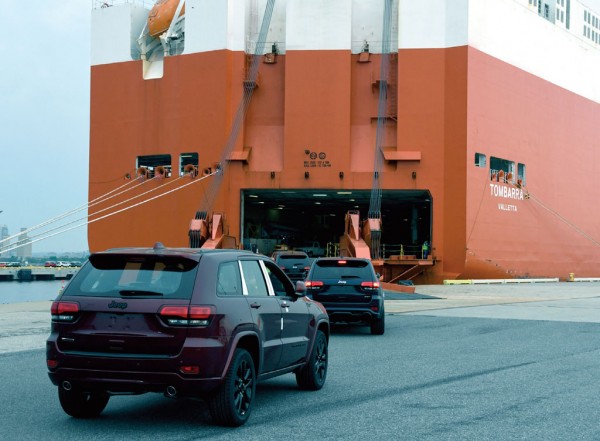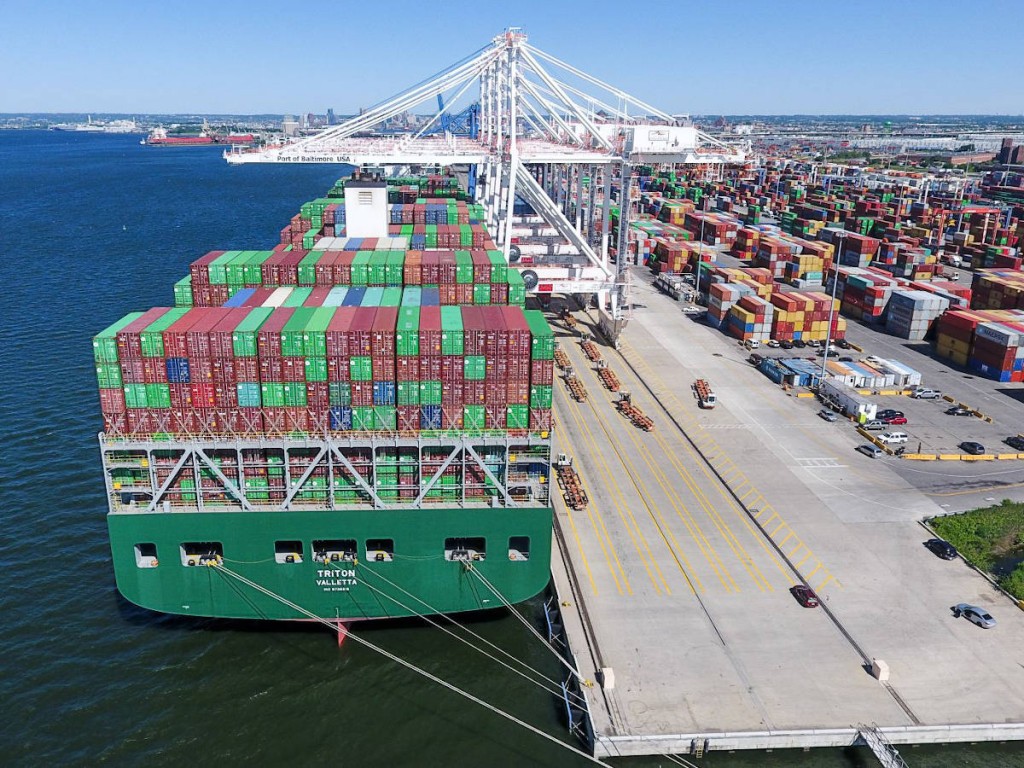Auto volumes top 2019 figures; Container growth reflects consumer confidence
Newly released September figures for the Helen Delich Bentley Port of Baltimore show volumes at the state-owned, public marine terminals continue to rebound dramatically from lows during the COVID-19 pandemic. Autos volumes for the month saw a triple-digit improvement from COVID-19 lows in May – and even posted the category’s first year-over-year increase since the pandemic. Containers and general cargo also continue to show impressive increases from COVID-19 lows.

Autos surge past COVID-19 lows, show year-over-year increase of 8%
September was a tremendous month for automobiles and light trucks arriving at the Port of Baltimore. Compared to the category’s low point in May, the September numbers were significantly higher. And comparing September 2020 to September 2019, autos volumes were up 8%.
September 2020 vs. May 2020 |
September 2020 vs. September 2019 | |
Autos/Light Trucks (47,589 units) |
169.0% |
8.0% |
Positive trends continue for cargo, container volumes
While cargo volumes overall remain down year-over-year, September numbers showed a leap compared to June when volumes hit a low point for containers and general cargo. In addition, comparing September 2020 to September 2019, roll on/roll off (farm and construction machinery) exports rose 1.6%.
|
September 2020 vs. June 2020 |
September 2020 vs. September 2019 | |
General cargo (tons) |
860,150 |
16.9% |
-0.057% |
Containers (boxes) |
54,982 |
16% |
-4.98% |
Roll on/roll off export (tons) |
23,017 |
-7.8% |
1.6% |
*NOTE: For containers, September’s year-over-year volumes would have reflected a 3% increase, but Tropical Storm Beta delayed three ships’ arrival at the Port. All three arrived October 1.
“The numbers we’re seeing at the Port of Baltimore are a testament to Maryland’s economic resiliency,” said MDOT Secretary Greg Slater. “These figures also reflect the confidence our industry partners have in the Port’s infrastructure and its talented workforce.”
“It’s great news that we continue to see improving cargo volumes and other positive trends,” said MDOT Maryland Port Administration Executive Director William P. Doyle. “We’re attracting additional ocean carrier services, new product brands and increased bulk trade through the Port. Cars are heading immediately from the Port to dealerships, and e-commerce is playing a huge role in our container increases. Consumer confidence is growing. While these are good signs, the COVID-19 pandemic is still prevalent and continues to make this a very unpredictable maritime trade environment.”

In addition to higher volumes, the Port continues to gain new business as well as increased business from existing customers. Examples include:
- General Electric/Haier is opening a new gateway on the East Coast by moving additional appliances through the Port of Baltimore and its distribution center in Perryville.
- Evergreen Line, already one of the Port’s top container customers, is adding two additional ships from Asia with service through the Suez Canal. The Ever Ethic, which can carry 6,300-Twenty-foot Equivalent Unit (TEU) containers, is due to arrive at the Port of Baltimore on October 28; and the 7,000-TEU container Ever Shine is scheduled to arrive December 8.
- Metsä Group of Finland, one of the world’s largest international forest product producers, will expand its operations here as part of a new six-year contract with the Port.
The Port of Baltimore also continues to look toward its future. The Port and the U.S. Army Corps of Engineers signed an agreement for a $3 million study of a loop channel at the Seagirt Marine Terminal to explore ways to improve access and maneuverability for the massive ships that visit the Port. And the federal government announced a $10 million grant to MDOT MPA as part of a project to improve infrastructure at the Dundalk Marine Terminal against severe rain events and possible future sea-level rise and climate change.
Meanwhile, as part of the Port’s continuing public-private partnership (P3) with partner Ports America Chesapeake, construction for a second, 50-foot deep berth at the Seagirt Marine Terminal is moving forward. Dredging will begin late this year and four new additional Neo-Panamax cranes are scheduled to arrive in April and be operational next summer. A direct result of the 2009 P3 agreement, the second-deep berth will allow the Port to handle two supersized ships simultaneously.
The growing container business also accentuates the need for the Howard Street Tunnel expansion project in Baltimore, which will accommodate double-stacked rail cars to move cargo from the Port. That project is benefitting from public-private investment from the state, CSX and others.










